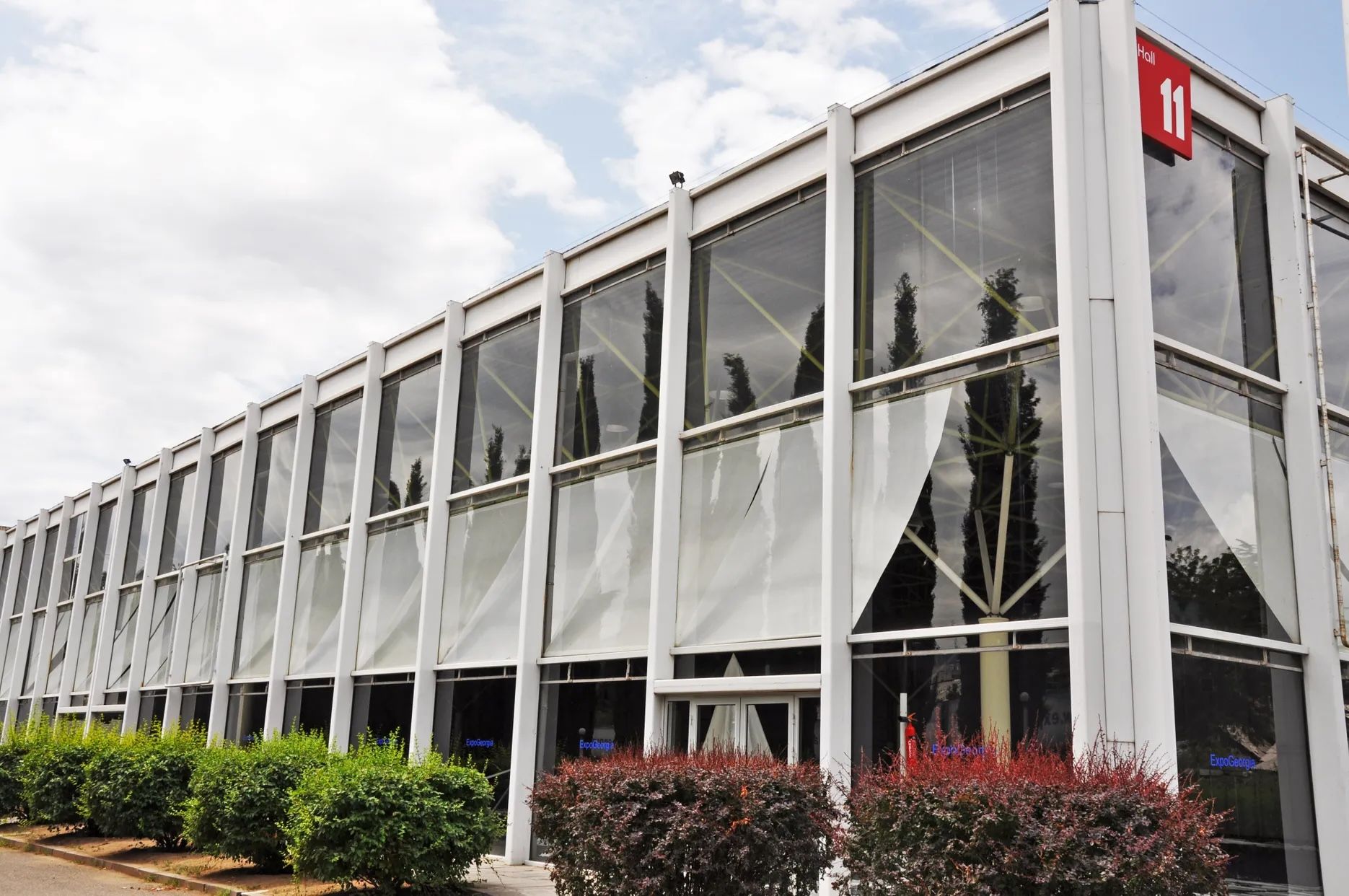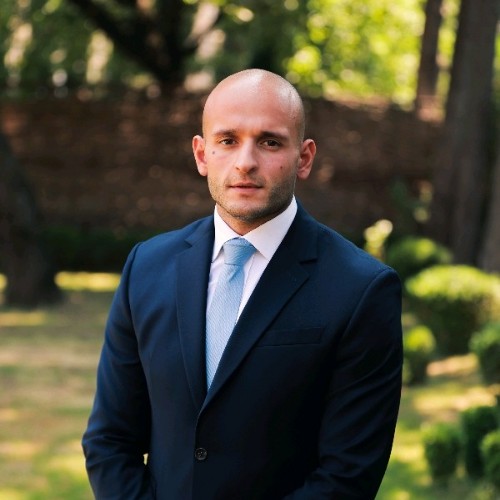
Meeting Destination Georgia
Between Modernity and History
At the foot of the Caucasian mountains on the Kura River, Tbilisi turns out to be a modern capital that attracts visitors with its historic old town and exciting history. Characteristically, the Peace Bridge in the foreground and the Civic Office with its mushroom heads as a roof in the background stand out. Photo: Pixabay, sanooj
At the foot of the Caucasian mountains on the Kura River, Tbilisi turns out to be a modern capital that attracts visitors with its historic old town and exciting history. Characteristically, the Peace Bridge in the foreground and the Civic Office with its mushroom heads as a roof in the background stand out. Photo: Pixabay, sanooj
Georgia – a country caught between its past and modernity, still marked by its history as a small nation between the great powers of history. Today, life pulsates in Tbilisi, a modern capital, also establishing itself as a tourist destination. The Georgia Tourism Organization has now invited to a press trip. What can Georgia offer as a meeting destination?
The first glimpse of Georgia is a fine white stripe on the horizon, which blends with a dark shade of gray to the top of the Caucasus from minute to minute. Dark green meadows sparse with trees glide along below the plane. Sporadically, a small settlement inserts itself into the landscape, which becomes rougher and rougher until suddenly, the dark turns into lush green and a large city.
It is Tbilisi, the capital of the Republic of Georgia. The plane touches down shallowly. To the left of the runway is a wrecked Boeing 747 and several commercial as well as private aircrafts parked. Golden-tinted glass towers over an old hangar. The terminal itself seems small. The plane empties quickly, and the immigration counters are passed just as quickly. Here, officers still put stamps into your passports, symbolizing your entry with an airplane and an arrow.
At ITB 2022, the Georgia National Tourism Administration represented Georgia as the official cultural destination in Berlin. This was followed a year later by participation as an ITB Berlin guest country under the slogan "Infinite Hospitality,” at which Georgia presented itself as a destination for travel and business events. The associated Convention and Exhibition Bureau of Georgia (GCEB) is still young, founded in 2016.
On the other hand, Georgia as a meeting destination is experienced and, after a long period of turbulence in the country, is reinventing itself as a modern destination with historical charm. The communicative direction is clear: "Georgia's combination of modern facilities and unique venues, strategic location, natural beauty, cultural richness, and welcoming atmosphere make it a special destination for meetings and conventions," says Levan Japaridze, head of the Georgia Convention and Exhibition Bureau of the Georgian National Tourism Administration.
Georgia is located right between Europe and Asia on the Caucasus. For centuries, the country was a link between different cultures and a bulwark against invasions by great powers that wanted to pass through Georgia, says guide Guro Alapishvili proudly. This is still evident today in the cityscape of Tbilisi. Iranian, Soviet, European, and many other influences can be found here. Rustaveli Avenue, for example, was designed and built by German emigrants. Anyone walking through the avenue feels as if they have been transported to Paris or Budapest.
On the Tsinandali Estate, in addition to a hotel with meeting facilities, there is also an old estate of the royal family of Georgia. In the Prince Alexander Museum, visitors can see how the family lived in the Caucasus during the time of the tsars in Russia. In the Mystery Room in the hotel complex, meetings can be held behind a secret door. Photo: Tsinandali Estate, A Radisson Collection Hotel
On the Tsinandali Estate, in addition to a hotel with meeting facilities, there is also an old estate of the royal family of Georgia. In the Prince Alexander Museum, visitors can see how the family lived in the Caucasus during the time of the tsars in Russia. In the Mystery Room in the hotel complex, meetings can be held behind a secret door. Photo: Tsinandali Estate, A Radisson Collection Hotel
Wine country Kakheti
Two hours outside of Tbilisi to the east lies Kakheti. It is the most visited region in Georgia. The way there leads over a mountain pass. If you are lucky, you can stop at the highest point at sunset and marvel at a red-hot sky that has no equal. Behind the pass is Tsinandali. This is where the royal family of Georgia and Russia once resided, overlooking the Caucasus Mountains. Today, the restored grounds are home to a modern Radisson Collection hotel complex with a green, landscaped facade. The old estate has been converted into a museum and stands in the middle of a park with unobstructed views of the Caucasus. A number of vacation homes are still to be built on the extensive grounds. However, the project is still in the planning stage.
On the first floor of the hotel there is a restaurant and meeting rooms for smaller groups. Across the street, an old courtyard has been re-roofed. The new roof stands so high on steel beams that it could still be an outdoor venue. The Tsinandali Festival, a classical music festival, is held here annually in early September. Just one door down is a ballroom with paneled walls. Sufficient for 450 people with theater seating, the hall includes state-of-the-art technology and has a pleasant, quiet atmosphere. Before moving on with our trip, however, the hotel's hosts don't miss the opportunity to present the hotel's own wine.
Georgians are particularly proud of their wine. Georgian winemaking, which is said to be over 8,000 years old, has now even become a UNESCO cultural heritage site. Georgia is thus considered the cradle of viticulture. One specialty is the amber-colored wine, which is therefore called Amber Wine to guests. It is strong and dry. According to guide Guro, it is even normal for Georgians to make their own wine at home.
Three quarters of an hour further on is the Kvareli Wine Cave. Long passages have been cut into the middle of the mountain to cool the home-made wine in a natural way. Here you can see how wine is produced in the Georgian way and taste Chacha, similar to grappa. In the entrance area, guests are shown how Georgian bread and other specialties are prepared in the traditional way.
Meet me in Tiflis
About fifteen minutes by car from the center of Tbilisi, a four-lane main road runs along the Kura River. To the right of the road, old multi-apartment high-rises tower up. The concrete facades are unadorned, even crumbling. Nevertheless, they still seem to be fully inhabited. We turn right into a street lined by large green trees. The roadsides to the left and right are fully parked with older SUV models. In the midst of this scenery, a gate made of iron bars suddenly appears; behind it, a parking lot in front of the grounds of EXPO Georgia.

Hall 11 of EXPO Georgia is the most modern hall on the site. It covers 1,690 square meters. Photo: EXPO Georgia
The site was designed and built in the 1960s during Soviet times. It is the only one of its kind in Georgia. The halls are widely spaced, creating room for a park with a pond in the middle. Mosaics on some walls of the buildings recall the history of the city. Although the site is not too large, it is currently oversized for its requirements. For example, about half of its capacity has been rented out as office space since the pandemic. One way for the private trade show company to get through the Corona period. Another hall was to be built on an adjacent plot of land. The prospects were good. An American architectural firm provided the designs. The EU granted subsidies. But it was not enough to finance the project. So, the property was sold again and construction was put on hold.

„We are a host nation.“
Resan Kikava, CEO of EXPO Georgia in Tbilisi
People from Iran, Azerbaijan, Armenia, Turkey, China, Russia, and Ukraine meet at the EXPO site in Tbilisi. The goal is to develop the location between the continents into a hub for B2B events, reports Resan Kikava, CEO of EXPO Georgia in Tbilisi. In the global digitization wave of the meetings industry during Corona, EXPO also tried to establish its own service. As it turned out, however, EXPO's customers and visitors in Tbilisi prefer the real thing, and so it is clear to the CEO where the strengths of his location lie. Kikava outlines, "We are a host nation." Despite the history surrounding invasions, including in recent times, Georgians see themselves as one of the most hospitable nations in the world and want to continue to welcome guests to the country.
Besides the EXPO site, the major hotel chains have now also found their way to the city and brought their globalized hotel standards with them. Among them are Radisson, Sheraton, and Biltmore. The Biltmore rises like a gigantic glass sculpture from the roofs of the city center. But it actually consists of two parts. One is the modern high-rise with a glass facade. The other is a historic building with a magnificent atrium facing the main street. This is also where the conference rooms are located. Heavy curtains hang in front of the windows in the smaller rooms. Expensive-looking leather chairs and wood paneling give the rooms prestige. Golden yellow lighting and royal blues, as well as white marble and gold trim rooms, complete the picture of the Biltmore. In addition, there is a 150-seat amphitheater on the second floor. At the time of the trip, a conference of the United Nations and the Georgian government was taking place. The strict appearance of security in the building and at the entrance for a column of diplomats strengthens the impression of a place where important decisions are made.

The amphitheater of the Biltmore Tbilisi Hotel in 150 seats. Photo: The Biltmore Tbilisi Hotel
Meet me in close proximity to Tbilisi
Half an hour northwest of Tbilisi lies the Svetitskhoveli Cathedral, a UNESCO World Heritage Site, in the small town of Mtskheta. Money was allocated here early on to renovate the city and prepare it for large crowds of tourists. The facades on the street sides are clean and radiate a pleasant homeliness. In town, we walk past souvenir stores and fruit stands that specialize in visitors. In the cathedral, we come across graves with Georgian, Russian, and Arabic characters. Testimony to the varied history of the country.
Just a few kilometers away is Château Mukhrani, also an old royal family estate. For a long time, it was left to decay. It is only in the last few years that the estate has been managed again. Today, it is home to a winery and two event venues. First, there is the castle itself. Each room has a different theme. One room, for example, is decorated with Greek sculptures, while another is furnished in the Arabian style. The result is a versatile building with a medium-sized hall for receptions and smaller rooms for meetings. Further back on the estate, a new building has just been put into service. The Orangery is a square box with high glass walls and window pediments that let in a lot of light. When we are there, a wedding with banquet seating and a small stage is being set up. Despite all the glass, the drums rattle surprisingly little through the hall. Behind the Orangery spreads a large vineyard slope, inviting for evening strolls.
This property also reflects the contrast between the dawn of modernity and evidence of the country's history. The estate appears high class and modern Western. However, the way there leads through an aging village with old, dilapidated buildings. Next to the gleaming white entrance gate to the compound are dried-out soccer fields with rusty goal posts. The road is potholed and bumpy.
Georgian cuisine
The outstanding feature of Georgia turns out to be the cuisine. It is particularly meat- and fat-heavy, and at least as delicious. Thanks to the many cross-cultural influences in the region, it has elements of other cultural areas. Nevertheless, it is rich and diverse and has produced many regional specialties. Khinkali, for example, are dumplings cooked and stuffed with a meat paste. Khachapuri is bread filled with cheese and baked in the oven. In general, bread has a high value in Georgian cuisine. It is accompanied, for example, by a paste made of spinach, beetroot, or beans, called pkhali. Also, very important are mzwadi, grilled shish kebabs, traditionally made from pork.
Young chefs are aware of the vices of traditional cuisine, Guro tells us over dinner. They are trying their hand at it, trying to preserve the flavor but make the dishes lighter and more digestible. And so small boutique restaurants are opening in Tbilisi, where the creativity of Georgian chefs can be tasted in a living room charm.
Walking through the old town of Tbilisi, we stop at the small boutique restaurant Kneina. Owner Lasha teaches Georgian history. He bought the house in the 90s. In the basement, he found remains of a furnace from a building that previously stood on the site and must have fallen victim to one of the countless destructions of the city center. In the main room hangs an old map showing Georgia still divided between Russia and the Ottoman Empire. Lasha asks me if I've tried chacha yet and laughingly pulls a bottle of homemade chacha out of the cooler. The grappa-like liquor is particularly high-proof, but it hardly burns and opens up a comforting warmth in my stomach. Lasha notices that I like the liquor, fills a smaller bottle for me as a souvenir, and enthusiastically presses it into my hands. "Infinite Hospitality," I remember the slogan of the tourist office.
Vegetarian dining in Georgian
Georgian cuisine initially appears to be very meat-heavy. Despite the traditional cuisine, more and more young people in Georgia are starting to eat vegetarian food, says Guro. A guide to traditional vegetarian cuisine can be found on the website of the tourist office.
How to get to Georgia
How to get to Georgia from Germany? About the same travel distance as the Canary Islands, Georgia is located in the opposite, eastern direction on the Black Sea. According to the Tbilisi airport website, there are two direct flights, one from Berlin and one from Munich. From Hamburg, the journey takes about six hours with a change in Munich, from which it takes about four and a half hours. The clocks in Georgia are two hours ahead of those in Germany.
Georgia presents itself as ready for meetings up to medium size. The small country on the Caucasus stands in stark contrast to its history, recent developments and the dawn of European modernity. For meetings, there are retreats outside the cities as well as prestigious venues in the city center. However, Georgia should not be visited for business meetings alone. The diverse nature and sights in the vicinity of the capital invite you to include Georgia as a bleisure destination in your event concept.
Editor's note: We are currently testing machine translations of articles. This article has been automatically translated into English by DeepL and checked by an editorial team member. We look forward to your feedback.

